Blog

Proper foot care is essential for individuals with diabetes to prevent serious complications. Keeping the feet clean by washing them daily with mild soap and warm water helps reduce the risk of infections. Thoroughly drying the feet, especially between the toes, prevents excess moisture that can lead to fungal infections. Moisturizing dry skin is important to prevent cracks that may allow bacteria to enter. Regularly inspecting the feet for cuts, blisters, or changes in skin color can help detect problems early. Practicing healthy foot habits, such as wearing well-fitted shoes and avoiding walking barefoot, reduces the risk of injuries. Poor circulation and nerve damage associated with diabetes make foot care a priority. If you have diabetes, it is strongly suggested that you are under the care of a podiatrist who can help you to manage this serious condition.
Diabetic foot care is important in preventing foot ailments such as ulcers. If you are suffering from diabetes or have any other concerns about your feet, contact the podiatrists from Boston Common Podiatry. Our doctors can provide the care you need to keep you pain-free and on your feet.
Diabetic Foot Care
Diabetes affects millions of people every year. The condition can damage blood vessels in many parts of the body, especially the feet. Because of this, taking care of your feet is essential if you have diabetes, and having a podiatrist help monitor your foot health is highly recommended.
The Importance of Caring for Your Feet
- Routinely inspect your feet for bruises or sores.
- Wear socks that fit your feet comfortably.
- Wear comfortable shoes that provide adequate support.
Patients with diabetes should have their doctor monitor their blood levels, as blood sugar levels play such a huge role in diabetic care. Monitoring these levels on a regular basis is highly advised.
It is always best to inform your healthcare professional of any concerns you may have regarding your feet, especially for diabetic patients. Early treatment and routine foot examinations are keys to maintaining proper health, especially because severe complications can arise if proper treatment is not applied.
If you have any questions please feel free to contact our office located in Boston, MA . We offer the newest diagnostic and treatment technologies for all your foot and ankle needs.

Ingrown toenails occur when the edge of the nail grows into the surrounding skin, causing pain, redness, swelling, and sometimes infection. This condition is common among teenagers and those who are overweight, as tight shoes or excess pressure can aggravate the toenails. In addition to discomfort, you may notice pus or drainage if an infection sets in. A podiatrist can help by assessing the severity of the ingrown toenail and providing treatment options. For mild cases, they may suggest soaking the foot, proper nail trimming techniques, or padding to reduce pressure. If the condition persists or becomes infected, a podiatrist may need to remove part of the nail, or, in more serious cases, perform a permanent nail removal procedure. They may also recommend wearing properly fitting shoes to prevent recurrence. If you are struggling with an ingrown toenail, it is suggested that you prompty schedule an appointment with a podiatrist who can offer effective treatment remedies.
Ingrown toenails may initially present themselves as a minor discomfort, but they may progress into an infection in the skin without proper treatment. For more information about ingrown toenails, contact the podiatrists of Boston Common Podiatry. Our doctors can provide the care you need to keep you pain-free and on your feet.
Ingrown Toenails
Ingrown toenails are caused when the corner or side of a toenail grows into the soft flesh surrounding it. They often result in redness, swelling, pain, and in some cases, infection. This condition typically affects the big toe and may recur if it is not treated properly.
Causes
- Improper toenail trimming
- Genetics
- Improper shoe fitting
- Injury from pedicures or nail picking
- Abnormal gait
- Poor hygiene
You are more likely to develop an ingrown toenail if you are obese, have diabetes, arthritis, or have any fungal infection in your nails. Additionally, people who have foot or toe deformities are at a higher risk of developing an ingrown toenail.
Symptoms
Some symptoms of ingrown toenails are redness, swelling, and pain. In rare cases, there may be a yellowish drainage coming from the nail.
Treatment
Ignoring an ingrown toenail can have serious complications. Infections of the nail border can progress to a deeper soft-tissue infection, which can then turn into a bone infection. You should always speak with your podiatrist if you suspect you have an ingrown toenail, especially if you have diabetes or poor circulation.
If you have any questions, please feel free to contact our office located in Boston, MA . We offer the newest diagnostic and treatment technologies for all your foot care needs.
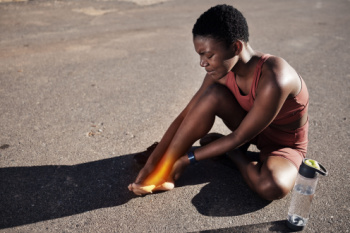
Ball of foot pain, also known as metatarsalgia, is a common issue for runners. It typically occurs when excessive pressure is placed on the metatarsal bones, causing inflammation and discomfort in the area. Several factors can contribute to this condition, including improper footwear, running on hard surfaces, or poor running form. Tight calf muscles or an imbalance in foot mechanics can also increase the strain on the forefoot. The most common symptoms of metatarsalgia include burning pain, numbness, and a feeling of discomfort under the ball of the foot. This pain may worsen during or after running, especially when pushing off or bearing weight on the toes. If you have foot pain from running, it is suggested that you contact a podiatrist who can treat various foot conditions, and guide you on how to possibly prevent this issue.
Foot Pain
Foot pain can be extremely painful and debilitating. If you have a foot pain, consult with the podiatrists from Boston Common Podiatry. Our doctors will assess your condition and provide you with quality foot and ankle treatment.
Causes
Foot pain is a very broad condition that could be caused by one or more ailments. The most common include:
- Bunions
- Hammertoes
- Plantar Fasciitis
- Bone Spurs
- Corns
- Tarsal Tunnel Syndrome
- Ingrown Toenails
- Arthritis (such as Gout, Rheumatoid, and Osteoarthritis)
- Flat Feet
- Injury (from stress fractures, broken toe, foot, ankle, Achilles tendon ruptures, and sprains)
- And more
Diagnosis
To figure out the cause of foot pain, podiatrists utilize several different methods. This can range from simple visual inspections and sensation tests to X-rays and MRI scans. Prior medical history, family medical history, and any recent physical traumatic events will all be taken into consideration for a proper diagnosis.
Treatment
Treatment depends upon the cause of the foot pain. Whether it is resting, staying off the foot, or having surgery; podiatrists have a number of treatment options available for foot pain.
If you have any questions, please feel free to contact our office located in Boston, MA . We offer the newest diagnostic and treatment technologies for all your foot care needs.
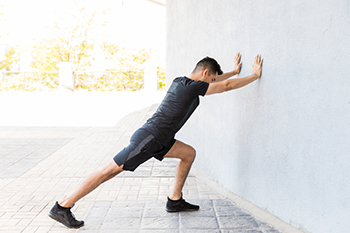
Achilles tendon injuries, including strains, tendinitis, tears, can cause pain and stiffness at the back of the ankle. These injuries often result from overuse, sudden increases in activity, or tight calf muscles. Athletes, runners, and people who spend long hours on their feet are particularly at risk. Strengthening and stretching exercises can help support recovery and prevent future injury. A simple calf stretch can improve flexibility and reduce tendon strain. Standing facing a wall, placing one foot forward, and pressing the hands against the wall while keeping the back leg straight can help loosen tight muscles. Eccentric heel drops strengthen the Achilles and calf muscles by lowering the heels slowly below a step and then rising back up. Toe raises, where you lift onto your toes, hold briefly, and slowly lower, build strength in the lower leg. For persistent Achilles tendon pain, it is suggested that you consult a podiatrist for proper care.
Achilles tendon injuries need immediate attention to avoid future complications. If you have any concerns, contact the podiatrists of Boston Common Podiatry. Our doctors can provide the care you need to keep you pain-free and on your feet.
What Is the Achilles Tendon?
The Achilles tendon is a tendon that connects the lower leg muscles and calf to the heel of the foot. It is the strongest tendon in the human body and is essential for making movement possible. Because this tendon is such an integral part of the body, any injuries to it can create immense difficulties and should immediately be presented to a doctor.
What Are the Symptoms of an Achilles Tendon Injury?
There are various types of injuries that can affect the Achilles tendon. The two most common injuries are Achilles tendinitis and ruptures of the tendon.
Achilles Tendinitis Symptoms
- Inflammation
- Dull to severe pain
- Increased blood flow to the tendon
- Thickening of the tendon
Rupture Symptoms
- Extreme pain and swelling in the foot
- Total immobility
Treatment and Prevention
Achilles tendon injuries are diagnosed by a thorough physical evaluation, which can include an MRI. Treatment involves rest, physical therapy, and in some cases, surgery. However, various preventative measures can be taken to avoid these injuries, such as:
- Thorough stretching of the tendon before and after exercise
- Strengthening exercises like calf raises, squats, leg curls, leg extensions, leg raises, lunges, and leg presses
If you have any questions please feel free to contact our office located in Boston, MA . We offer the newest diagnostic tools and technology to treat your foot and ankle needs.
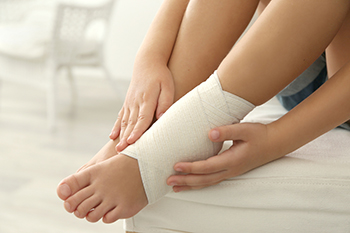
Ankle sprains can happen to anyone, though athletes are especially prone due to the physical demands of their sports. However, even non-athletes can sprain an ankle by a misstep or wearing high heels. Ankle sprains vary in type and severity. The most common is an inversion sprain, where the foot twists inward, overstretching the outer ankle ligaments. This type of ankle sprain is frequently seen in basketball players and other athletes who jump often. Less common is the eversion sprain, where the foot turns outward, typically affecting gymnasts. The rarest form is the high ankle sprain, which involves the ligaments between the tibia and fibula bones of the lower leg. Sprains are classified into three grades. Grade 1 involves mild stretching and swelling, Grade 2 includes partial ligament tears and moderate swelling and pain, and Grade 3, the most severe, involves complete ligament tears and significant loss of movement. Regardless of the severity, it is important to consult a podiatrist for an accurate diagnosis and appropriate treatment to prevent further injury. If you suspect you have sprained your ankle, it is suggested that you schedule an appointment with a podiatrist for a thorough evaluation and to explore treatment options.
Although ankle sprains are common, they aren’t always minor injuries. If you need your ankle injury looked at, contact the podiatrists from Boston Common Podiatry. Our doctors can provide the care you need to keep you pain-free and on your feet.
How Does an Ankle Sprain Occur?
Ankle sprains are the result of a tear in the ligaments within the ankle. These injuries may happen when you make a rapid shifting movement while your foot is planted. A less common way to sprain your ankle is when your ankle rolls inward while your foot turns outward.
What Are the Symptoms?
- Pain at the sight of the tear
- Bruising/Swelling
- Ankle area is tender to touch
- In severe cases, may hear/feel something tear
- Skin discoloration
Preventing a Sprain
- Wearing appropriate shoes for the occasion
- Stretching before exercises and sports
- Knowing your limits
Treatment of a Sprain
In many cases, the RICE method (Rest, Ice, Compression, and Elevate) is used to treat ankle sprains. However, you should see a podiatrist to see which treatment option would work best with your injury. In severe cases, surgery may be required.
It is important to ask your doctor about rehab options after you receive treatment for your injury. Stretching, strength training, and balance exercises may help the ankle heal while also preventing further injury.
If you have any questions, please feel free to contact our office located in Boston, MA . We offer the newest diagnostic and treatment technologies for all your foot care needs.
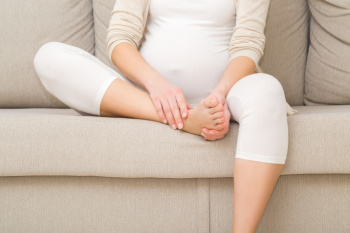
During pregnancy, many women experience changes in their feet, with one of the most noticeable being an increase in foot size. This occurs due to a combination of factors related to hormonal changes, weight gain, and the growing baby. Increased levels of the hormone relaxin play a significant role by loosening ligaments and joints in the body to accommodate childbirth. This relaxation of ligaments can lead to the feet becoming wider and longer. Additionally, the weight gained during pregnancy puts added pressure on the feet, causing the arches to flatten and the feet to spread. Fluid retention is another contributing factor, as the body retains more fluids during pregnancy, which can lead to swelling in the feet and ankles. As a result, many women find that their shoe size increases during pregnancy, and some may experience permanent changes even after childbirth. If you have foot pain during your pregnancy, it is suggested that you consult a podiatrist who can treat various foot conditions, and offer effective relief tips.
Pregnant women with swollen feet can be treated with a variety of different methods that are readily available. For more information about other cures for swollen feet during pregnancy, consult with the podiatrists from Boston Common Podiatry. Our doctors will attend to all of your foot and ankle needs.
What Foot Problems Can Arise During Pregnancy?
One problem that can occur is overpronation, which occurs when the arch of the foot flattens and tends to roll inward. This can cause pain and discomfort in your heels while you’re walking or even just standing up, trying to support your baby.
Another problem is edema, or swelling in the extremities. This often affects the feet during pregnancy but tends to occur in the later stages.
How Can I Keep My Feet Healthy During Pregnancy?
- Wearing orthotics can provide extra support for the feet and help distribute weight evenly
- Minimize the amount of time spent walking barefoot
- Wear shoes with good arch support
- Wear shoes that allow for good circulation to the feet
- Elevate feet if you experience swelling
- Massage your feet
- Get regular, light exercise, such as walking, to promote blood circulation to the feet
If you have any questions please feel free to contact our office located in Boston, MA . We offer the newest diagnostic and treatment technologies for all your foot and ankle needs.
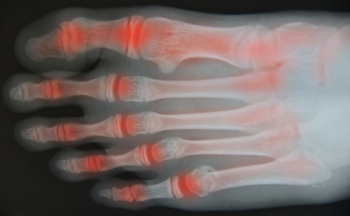
Foot arthritis causes inflammation and pain in the joints of the foot. It occurs when the cartilage that protects the joints wears down, leading to discomfort and limited movement. The two main types of foot arthritis are osteoarthritis and rheumatoid arthritis. Osteoarthritis is the most common form of arthritis and develops over time as the cartilage deteriorates due to age, injury, or wear and tear. Rheumatoid arthritis is an autoimmune disorder where the body’s immune system attacks the joints, causing inflammation and pain. Several factors contribute to the development of foot arthritis, including genetics, previous joint injuries, obesity, and repetitive stress. Symptoms of foot arthritis include joint stiffness, swelling, and difficulty walking. If you have developed foot arthritis, it is strongly suggested that you are under the care of a podiatrist who can guide you toward relief and management techniques.
Arthritis can be a difficult condition to live with. If you are seeking treatment, contact the podiatrists from Boston Common Podiatry. Our doctors can provide the care you need to keep you pain-free and on your feet.
Arthritic Foot Care
Arthritis is a joint disorder that involves the inflammation of different joints in your body, such as those in your feet. Arthritis is often caused by a degenerative joint disease and causes mild to severe pain in all affected areas. In addition to this, swelling and stiffness in the affected joints can also be a common symptom of arthritis.
In many cases, wearing ill-fitting shoes can worsen the effects and pain of arthritis. Wearing shoes that have a lower heel and extra room can help your feet feel more comfortable. In cases of rheumatoid arthritis, the arch in your foot may become problematic. Buying shoes with proper arch support that contour to your feet can help immensely.
Alleviating Arthritic Pain
- Exercises that stretch the foot can prevent further pain and injury and increase mobility
- Most of the pain can be alleviated with anti-inflammatory drugs, heat, and topical medications
- Massages can help temporarily alleviate pain.
It is best to see your doctor for the treatment that is right for your needs and symptoms. Conditions vary, and a podiatrist can help you determine the right method of care for your feet.
If you have any questions, please feel free to contact our office located in Boston, MA . We offer the newest diagnostic tools and technology to treat your foot and ankle needs.
Blog Archives
- 2025
- 2024
- 2023
- 2022
- 2021
- 2020
- 2019








